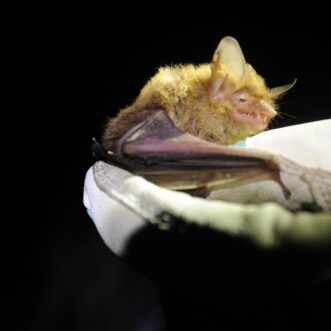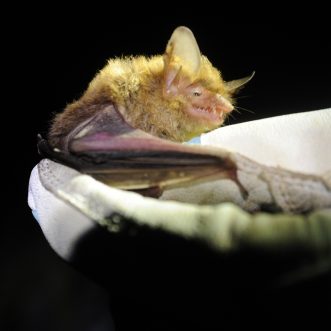On January 14th, 2016, the United States Fish and Wildlife Service (USFWS) published a final 4(d) rule for the federally threatened northern long-eared bat (Myotis septentrionalis). The final rule lifts the Endangered Species Act’s (ESA) “prohibition against incidental take.” As a result, all otherwise-legal activities related to tree clearing are exempt from the prohibition outlined in the ESA, except:
- Tree clearing within 0.25 mile of known hibernacula
- Tree clearing within 150 feet of a known maternity roost (i.e., a tree used by reproductive females to raise their young) between June 1 and July 31
If these exceptions cannot be avoided by project impacts, a project proponent will need to coordinate with the local USFWS office. The USFWS’s final 4(d) rule recognizes the fact that declines in northern long-eared bat populations are primarily attributable to White-Nose Syndrome (WNS), a fungal disease decimating bat populations, and not from direct take associated with the clearing of forested habitat. While this provides relief for some, it is important to note that take prohibitions of federally endangered Indiana bats (Myotis sodalis) are more stringent and remain in place. The two species’ geographic ranges greatly overlap. Additionally, state agencies have yet to officially weigh in on the final 4(d) rule and whether they will require additional conservation measures for the species.
The entire final 4(d) rule can be found here: https://www.federalregister.gov/articles/2016/01/14/2016-00617/endangered-and-threatened-wildlife-and-plants-4d-rule-for-the-northern-long-eared-bat.
For perspective, northern long-eared bats were listed as federally threatened with an interim 4(d) rule in April 2015. The interim rule allowed certain activities requiring tree clearing to be exempted from the ESA’s “prohibition against incidental take.” Similar to Indiana bats, northern long-eared bats raise their young each summer in trees within forested habitat. Northern long-eared bats range across 39 U.S. states and portions of Canada, which is the largest range of any federally listed species. Each winter, these bats hibernate in the region’s caves and mines (called ‘hibernacula’). WNS was first discovered near Albany, New York, in 2006 and has quickly spread across the eastern United States and Canada. The disease, which is not harmful to humans, causes bats to quickly burn through their fat reserves during the winter hibernation period. Affected animals emerge from hibernacula, depleted of their stored body fat, to a cold and snowy landscape devoid of insects, their sole food source. Mortality as a result of WNS is estimated to range from 90 to 100% at most hibernacula.
If you have any questions about the final 4(d) rule, please contact Ryan Slack at rslack@cecinc.com or 317-655-7777.



Post a Comment